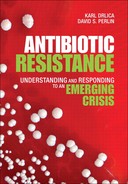Book Description
Authored by two leading investigators, this book presents a thorough and authoritative overview of this multifaceted field of science. Pathogenic bacteria have been evolving and spreading resistance to diverse classes of antibiotics. As a result, we risk losing our ability to control and treat infectious diseases. Understanding antibiotic resistance, therefore, is becoming increasingly essential for a broad audience of healthcare professionals, biomedical and public health researchers, students, and policymakers. The authors answer questions such as: What is resistance? How does it emerge? How do common human activities contribute to resistance? What can we do about it? How can we strengthen our “first lines of defense” against resistance? Are there better ways to discover new antibiotics? What unique issues are associated with MRSA and viral influenza? In addition to defining and evaluating one of the most important emerging threats to public health, the authors explain what can be done to minimize risks to public health, and to preserve and extend the effectiveness of existing and new antibiotics.
Table of Contents
- Title Page
- Copyright Page
- Table of Contents
- About the Authors
- Preface
- Chapter 1. Introduction to the Resistance Problem
- Chapter 2. Working with Pathogens
- Chapter 3. A Survey of Antibiotics
- Chapter 4. Dosing to Cure
- Chapter 5. Emergence of Resistance
- Chapter 6. Movement of Resistance Genes Among Pathogens
- Chapter 7. Transmission of Resistant Disease
- Chapter 8. Surveillance
- Chapter 9. Making New Antibiotics
- Chapter 10. Restricting Antibiotic Use and Optimizing Dosing
- Chapter 11. Influenza and Antibiotic Resistance
- Chapter 12. Avoiding Resistant Pathogens
- Afterword: A Course of Action
- Appendix A. Molecules of Life
- Appendix B. Microbial Life Forms
- Glossary
- Literature Cited
- Index
